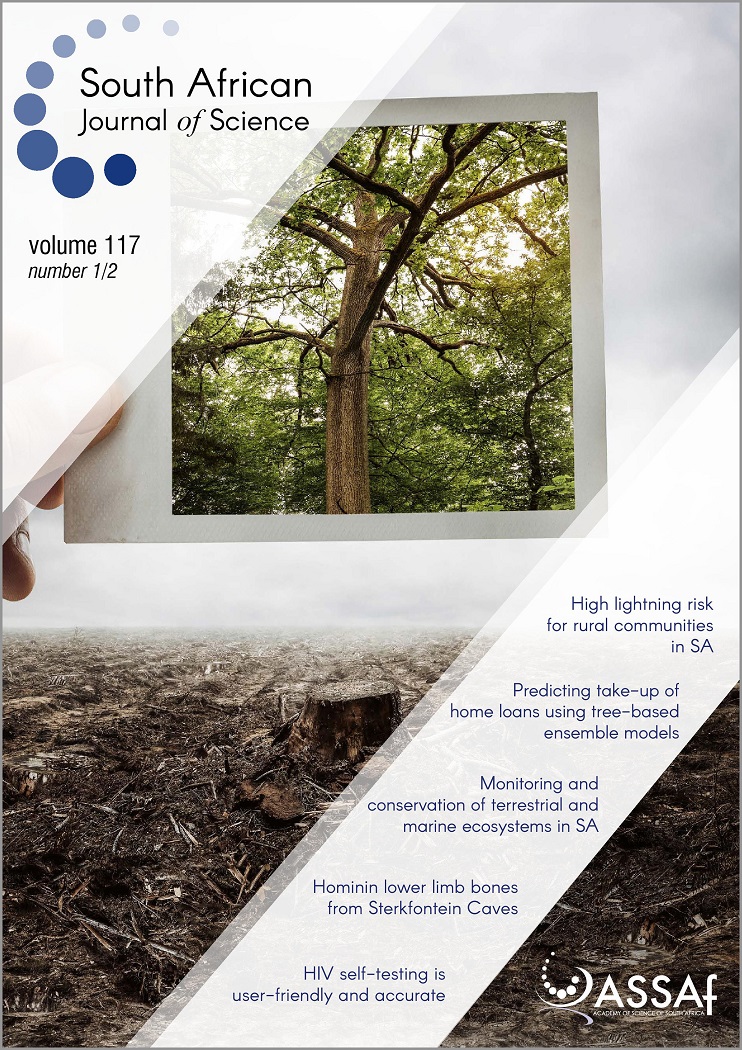The North-West University’s High Altitude Radiation Monitor programme
DOI:
https://doi.org/10.17159/sajs.2021/7561Keywords:
radiation, atmosphere, dose rate, aircraft, public awarenessAbstract
Since the discovery of cosmic radiation by Victor Hess in 1912, when he reported a significant increase in radiation as altitude increases, concerns about radiation effects on human bodies and equipment have grown over the years. The secondary and tertiary particles which result from the interaction of primary cosmic rays with atmospheric particles and commercial aircraft components, are the primary cause of the radiation dose deposited in human bodies and in electronic equipment (avionics) during aircraft flights. At an altitude of about 10 km (or higher) above sea level, the dose received by frequent flyers, and especially flight crew, is a serious concern. Also of concern is the possible failure of sensitive equipment on board commercial aircrafts as a result of flying through this mixed radiation field. Monitoring radiation in the atmosphere is therefore very important. Here we report on the first measurements by the High Altitude Radiation Monitor (HARM) detector during a commercial flight from Johannesburg (O.R. Tambo International Airport) to Windhoek (Hosea Kutako International Airport). As part of a public awareness activity, the HARM detector was placed on a high-altitude balloon, and these measurements are also shown here. Model calculations (estimations) of radiation levels for the commercial aircraft flight are shown and the results are used to interpret our measurements.
Significance:
- Measurements of the Regener–Pfotzer maximum in South Africa and dosimetric measurements on board a commercial flight are presented.
- These radiation measurements are compared to model calculations which can be used to predict the radiation dose during commercial flights.
- This study also aims to raise public awareness about the atmospheric radiation environment from ground level to the Regener–Pfotzer peak at high altitude.
Published
Issue
Section
License

All articles are published under a Creative Commons Attribution 4.0 International Licence
Copyright is retained by the authors. Readers are welcome to reproduce, share and adapt the content without permission provided the source is attributed.
Disclaimer: The publisher and editors accept no responsibility for statements made by the authors
How to Cite
- Abstract 779
- PDF 825
- EPUB 169
- XML 241












.png)